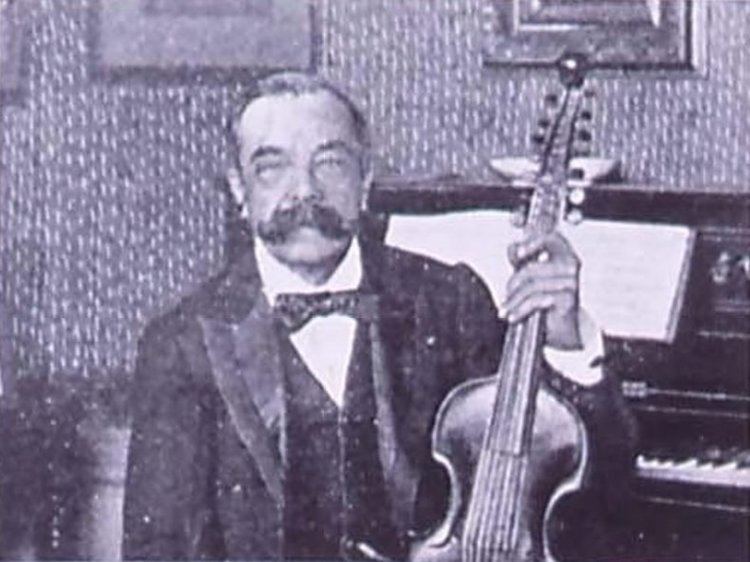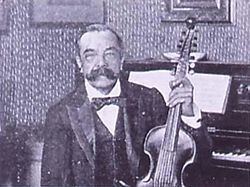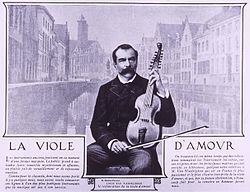Name Louis Waefelghem | Died June 19, 1908 | |
 | ||
Louis van Waefelghem: Romance for Viola d'amore and Harp
Louis van Waefelghem (13 January 1840 in Bruges – 19 June 1908 in Paris) was a Belgian violinist, violist and one of the greatest viola d'amore players of the 19th century. He also composed several works and made transcriptions for viola and viola d'amore.
Contents
- Louis van Waefelghem Romance for Viola damore and Harp
- Louis van Waefelghem Soir dautomne Autumn Evening for viola damore and piano
- Original compositions
- Transcriptions and editions
- Dedications
- Discography
- References

Waefelghem was educated at the Athénée Royal in Bruges and then studied violin with Lambert Joseph Meerts at the Koninklijk Conservatorium in Brussels. After finding success as a violinist in Germany and at the Opera House in Budapest, he moved to Paris in 1863 to pursue a career as a performer on viola and viola d'amore. He played in the orchestra of the Paris Opera in 1868 and also in the Pasdeloup Orchestra. Waefelghem was Examiner of the Viola at the Conservatoire de Paris before Théophile Laforge was appointed the first Professor of Viola in 1894. His reputation as a gifted violist quickly spread and, after the Franco-Prussian War (1870–1871), he traveled to London where he played in the Royal Opera orchestra and at chamber concerts of the Musical Union with Joseph Joachim, Leopold Auer, Henri Vieuxtemps, Camillo Sivori, Pablo de Sarasate, and others. From 1875 he was the violist of the Quatuor Marsick, along with Guillaume Rémy, Jules Delsart and founder Martin Pierre Marsick, one of the best and most famous string quartets in Paris of the time. He also a member of the Quatuor Geloso and of Ovide Musin's quartet with Metzger and Vander Gucht. Waefelghem was the principal violist with the Orchestre Lamoureux from 1881 to 1895.

In 1895 Waefelghem, along with colleagues Laurent Grillet (hurdy-gurdy), Louis Diémer (harpsichord) and Jules Delsart (viola da gamba), founded the Société des Instruments Anciens. The ensemble gave their début at the Salle Pleyel in Paris on 2 May 1895 and performed throughout Europe with great success. Thereafter Waefelghem devoted himself entirely to the revival and study of the viola d'amore. He quickly became one of the greatest viola d'amore players of the 19th century, and being a highly enthusiastic researcher, restored to the world the complete library of music for the instrument which had sunk into oblivion.
